
Suspected serial killer Billy Chemirmir killed in Texas prison
A convicted murderer who is suspected of slaughtering dozens of other women was found dead in his Texas jail cell early Tuesday, according to the Texas Department of Criminal Justice. The TDCJ said Billy Chemirmir’s cellmate was identified as the assailant. Billy Chemirmir was found guilty of capital murder in October 2022 in the death of 87-year-old Mary Brooks. His first case for another murder ended in a mistrial.
2023-09-19 23:46

Sergio Brown - updates: Missing ex-NFL player ‘posts video rant’ after mother is found dead
A former NFL player is missing after his mother was found dead in a creek behind her home in Illinois. Mystery erupted around Sergio Brown on Saturday after a concerned family member filed a missing persons report for the 35-year-old New England Patriots alum and his mother Myrtle Brown, 73. Myrtle was found dead less than 100 yards from her Maywood home the following day. Her death was ruled a homicide as the Cook County Medical Examiner’s Office found injuries resulting from an assault. The case took a bizarre turn on Monday as video emerged from an Instagram account linked to Mr Brown, Fox32 reported. In the video, a man identified as Mr Brown claims he’s been kidnapped by law enforcement as he goes on a long-winded rant against “fake news” and the FBI. He also claims that he thought his mother was on vacation. The Independent has not been able to independently verify that the account belongs to Mr Brown. Police have not commented on the video. Read More Missing ex-NFL star posts bizarre Instagram about police and FBI after mother found dead in creek Ex-NFL star Sergio Brown and his mother went missing. Police say she was murdered and he has yet to be found
2023-09-19 23:25
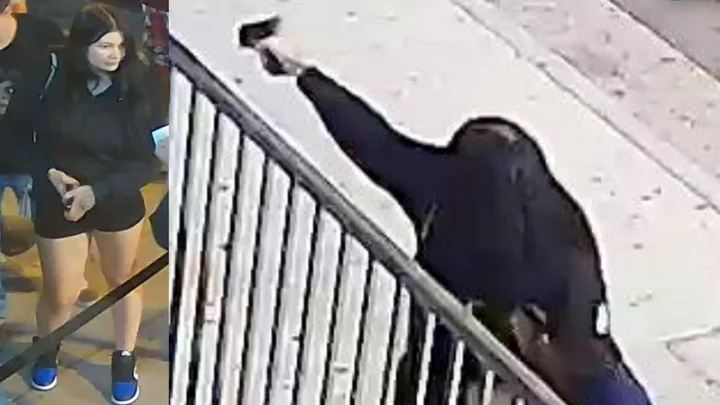
Denver police search for woman suspected of mass shooting at Dierks Bentley bar
Police in Denver are looking for a female suspect in connection with a mass shooting that injured five people at a bar in the city’s Lower Downtown district. The shooting happened at Dierks Bentley’s Whiskey Row at around 11.14pm on Saturday. Surveillance cameras caught images of a woman pointing a gun in the direction of five people standing outside of the bar. According to police, the woman was denied entry into the bar, then started to walk away, but quickly returned to talk again with security staff. After she started to walk away from the bar for a second time, she took out a gun and fired it in the direction of the bar several times, injuring five victims who are presumed by police to not be the intended targets. Officers in the area quickly rushed to the scene along with paramedics who took the victims to the hospital. The injuries they sustained are believed to be non-life-threatening. Lissa Druss, a spokesperson for Dierks Bentley’s Whiskey Row told Scripps News, “We are disheartened by the events of last evening. Our thoughts and prayers go out to those that were injured,” she said. “We are grateful for the swift actions of DPD, but we are very concerned about the activity in LoDo and have been engaged with city officials and neighbourhood leaders on how to make positive improvements in the area. The safety of our staff and our patrons is paramount to our company." There has yet to be an arrest made in connection with the shooting. This particular shooting has been recorded as the 500th mass shooting this year in the United States, according to the Gun Violence Archive. The bar where the shooting took place opened in 2021 and is part of a chain of bars across the United States owned by American country music star Dierks Bentley. Another shooting also happened in the past few in Denver on 17th Avenue between Gilpin Street and Williams Street, where three people were shot, two of them hospitalised, Denver police say. The incident happened on Monday night, with a possible suspect in custody. Read More A Colorado mountain tied to an 1864 massacre is renamed Mount Blue Sky Minnesota man acquitted of killing 3 people, wounding 2 others in case that turned alibi defense Mother of Baltimore mass shooting victim condemns faulty police response: 'That's not right'
2023-09-19 22:57
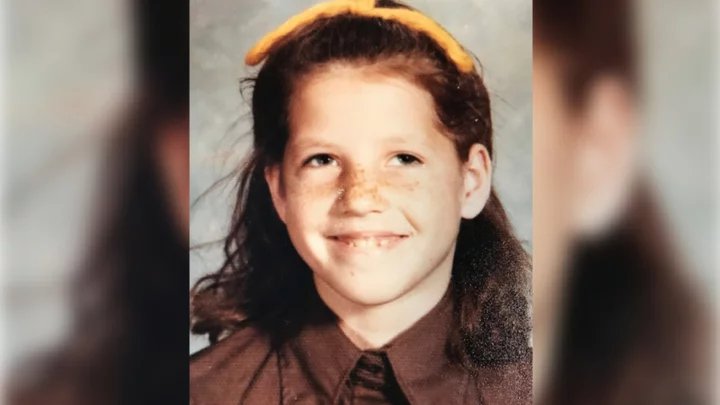
Cold case rape and murder of nine-year-old girl in Georgia is finally solved after 50 years
After five decades of agony for the family of a nine-year-old girl who was raped and killed, police have identified the culprit of the heinous crime. Debbie Lynn Randall vanished in mid-January of 1972. Her body, which had been raped and strangled, was found 16 days later after thousands of people banded together to search for the missing girl. She was thought to have been abducted from a nearby laundromat in Marietta and was found near an intersection of Windy Hill and Powers Ferry Road in Marietta, Georgia. For decades, the family never learned who did this to the nine-year-old, with her parents dying before they ever got to know the truth. In 2022, a piece of cloth that was recovered from the crime scene was sent to forensics for further analysis after police obtained more DNA testing funding. DNA Labs Internation conducted further testing and found a potential match for the killer, and contacted the family to provide additional DNA samples for comparison. The man they finally landed on was identified as William Rose, someone who was never on police radar at the time. William Rose, however, will never face justice for his crime, as he died by suicide in 1974, two years after he killed Debbie. He was 24 at the time of the murder and would have been around 75 if he were still alive. Debbie’s mother died of leukaemia in 2018 and her father died only last year, however, her brother, Melvin Randall was at the news conference to hear who the person was who killed his sister. "My family appreciates everything they’ve done - all the time and the effort that they’ve done to bring to a close." Mr Randall said. "I wish my mother was here, but I know she knows in heaven that it’s finally over." Debbie went to the laundromat half a block away from her house with her stepfather at around 7pm, but he left before her, reports WAFB. Around 8.30pm Debbie’s mother became concerned about her whereabouts and went out the laundromat to try and find her, but an employee said she left an hour before. Two local youths said that a dark pickup truck backed up in a parking lot near the girl’s home and drove away quickly. All that was left in the parking lot was spilt laundry detergent. While Rose did not live in the area, he likely often visited the the community because he had relatives there, Ron Alter, a cold case investigator with the district attorney’s office said. "If he drove by, I’m sure he saw her. I believe that was a crime of opportunity. He saw her by herself and abducted her," Mr Alter said. He also confirmed that Rose had prior arrests for alcohol-related incidents. Mr Alter said it’s possible Rose killed himself because he was afraid of being caught or going to jail. It was thanks to new technological advances in DNA testing that justice and peace were given to this family after all this time "It may take us some time, but with the new technologies that are coming out every day, we’re going to do everything we can to solve our cold cases, to make sure we bring people to justice," Cobb County District Attorney Flynn Broady said. As for Debbie’s surviving brother, he says that he has forgiven Rose for what he did to his sister. “I learned over the years that it does you no good to hate or hold grudges,” he said. Read More Georgia deputies killed in ‘ambush’ while serving arrest warrant The BTK killer’s need for notoriety led to his capture a decade ago. He’s now a ‘prime suspect’ in at least two other murders ‘Lady of the Dunes’ killer identified after nearly 50 years
2023-09-19 21:23
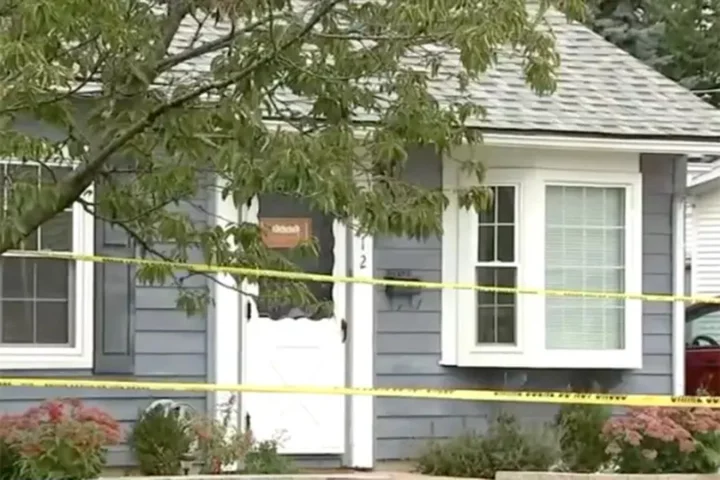
Killer at large after family of four shot dead in Illinois home along with three dogs
A family of four and their three dogs were found shot dead in their home in a Chicago suburb – with the killer or killers now at large. The bodies of Alberto Rolon, Zoraida Bartolomei and their two children were found on Sunday after family members asked police to carry out a welfare check, Romeoville Police Deputy Chief Chris Burne said in a press conference on Monday. Police said that relatives had become concerned when one of the adults failed to turn up for work at 6am on Sunday morning and then didn’t respond to phone calls throughout the day. Officers carried out a welfare check at around 8.43pm at the family’s home on the residential 500 block of Concord Avenue in Romeoville. When police arrived at the home, the four family members were dead from gunshot wounds. Three dogs were also found shot dead inside the home. The names and ages of the children have not yet been released. In a statement, police said that the killings are believed to have happened between 9pm on Saturday evening and 5am on Sunday morning. Deputy Chief Burne said that investigators had ruled out a murder-suicide, with the perpetrator or perpetrator unknown at this time. “We do not believe the offender is among the victims,” he said during the press conference. “It is not a murder-suicide.” Despite concerns that the killer is out there, police said they do not feel the need to lock down the area. “Due to the timeframe that has gone by – more than 18 hours from the time we were contacted – we are not asking anybody to shelter in place, we are not actively looking for anybody in the area,” said Deputy Chief Burne. Currently, no further information about the killer is known, with locals voicing concerns that such a tragedy could unfold in what they thought was a peaceful residential area. Lynn Phillips, who lives one door down from the family’s home, told The Chicago Sun Times that it was “devastating”. “I’ve been crying on and off all day. It was a mom and dad and a couple of kids. The parents would be outside working the yard, and we’d wave hi and bye, that kind of thing. Nothing unusual. We all keep to ourselves,” the neighbour said. Cristina Ibarra, who has lived in the residential community for three years, told the paper that it is very unusual for police to even patrol the area because the streets are usually so quiet. “It’s sad because it’s your neighborhood and it’s usually quiet, and then this happens,” Ms Ibarra said. “It’s very sad.” Police said that the investigation is in the early stages, so further details will not yet be released due to the sensitivity of the case. Read More Former NFL player Sergio Brown missing; mother's body was found near suburban Chicago creek Owner of day care where toddler died of suspected fentanyl exposure dubbed ‘depraved’ in court hearing Delphi murders suspect makes bombshell claim that victims were ‘sacrificed’ by white nationalist cult
2023-09-19 19:49

Police investigating deaths of two aspiring models in apartment buildings days apart
Police in Los Angeles are investigating after two aspiring models were found dead in apartment complexes just days apart. One of the deaths has already been ruled a murder, while the second is still under investigation. Police said it was too early to say if the cases are connected, according to ABC News. Maleesa Mooney, 31, was killed on 12 September. Police found her around 3.45pm PST by officers responding to a welfare check at her apartment. That death is being investigated as a homicide, according to the broadcaster, citing an LAPD spokesperson. “The investigation revealed that Maleesa Mooney had been murdered inside of her apartment. Maleesa Mooney’s exact cause of death is unknown, pending a post-mortem examination which will be conducted by the Los Angeles County Coroner’s office,” police said in a statement on 15 September. Nichole "Nikki" Coats, 32, was killed on 10 September. Her cause of death is "undetermined" at this point, but a homicide investigation may begin following the LA County Department of Medical Examiner-Coroner report. Ms Mooney's family held a rally in LA on Sunday evening demanding justice for the woman's death. The woman's sister, Jourdin Pauline, told an ABC News affiliate that her family became concerned after multiple failed attempts to get in touch with her. "We're supposed to grow old together," Ms Pauline told KABC. "That's not supposed to happen to her." She described her sister as "kind," "genuine," and "loving." "To have someone do what they did to my sister, to that caliber, is sick. It's demented,” she said. The LAPD has asked that anyone with information regarding Ms Mooney's death come forward. Ms Coats' father, Guy Coats, told ABC News that he and his family are "distraught" after learning of her death. He said Ms Coats was an aspiring model who worked as a sale rep in her daytime hours. On 12 September, a cousin who had spent time with Ms Coats told Mr Coats that she couldn't get ahold of the woman. Ms Coats cousin had a key to her apartment and let herself in to see if she was home. She found Ms Coats unresponsive, and said when she touched her she "was like a rock." The cousin then called 911. Ms Coats family became suspicious that foul play led to the woman's death after learning that another aspiring model had been killed just days before, only three miles from her apartment. The family is currently awaiting the coroner's report. Read More Person detained in ‘ambush’ killing of LA sheriff’s deputy Police investigating murders of elderly couple find human remains Idaho murder victim’s father claims Bryan Kohberger is enjoying ‘unprecedented privileges’ in jail
2023-09-19 18:49

Owner of day care where toddler died of suspected fentanyl exposure dubbed ‘depraved’ in court hearing
The owner of a New York day care where a one-year-old boy died of fentanyl exposure was dubbed “depraved” during a court hearing. Youngster Nicholas Dominici died after he was exposed to the opioid at a Bronx facility on Friday, while three other young children were hospitalised. Daycare owner Grei Mendez, 36, and tenant Carlisto Acevedo Brito, 41, were arrested on charges including murder, manslaughter and assault. A kilo of fentanyl was found in a hallway closet outside Mr Brito’s room, which he rented from Ms Mendez for $200 a week, according to investigators. Prosecutors told a judge during a Sunday night arraignment hearing that Ms Mendez had taken part in the “reckless depraved act” by renting Mr Brito, her husband’s cousin, the room, reported ABC News. Her lawyer told the court that his client, who faces a sentence of life imprisonment if convicted, had no idea that drugs were being stored at the daycare. “Her only crime was renting her room to someone who had a kilo,” attorney Andres Aranda said. “There is no evidence that she did anything but care properly for these children.” Police say that drug production equipment was also found inside the daycare. Investigators believe that the children inhaled fentanyl particles during their daylong exposure to the drug before they were found unconscious and the alarm was raised. The judge said that Mr Brito, a national of the Dominican Republic in the country illegally, was a flight risk. He also said that Ms Mendez, who is not a US citizen and also has ties to the Dominican Republic, was a flight risk. Authorities are also looking to question Ms Mendez’s husband, who they say was captured on video fleeing the daycare with bags after the incident. “I love him, I miss him, I want him back – but there’s nothing that will give me back my son – when I came home from work and walked through the door, he’d say ‘daddy, daddy!’” Nicholas’s father, Otoniel Feliz, told ABC7. “My wife was on her way to the day care. She was going to pick him up early. Shortly before she arrives, she receives the call and also sees the ambulance.” Read More One-year-old child dead and three others hospitalised after daycare incident
2023-09-19 07:26
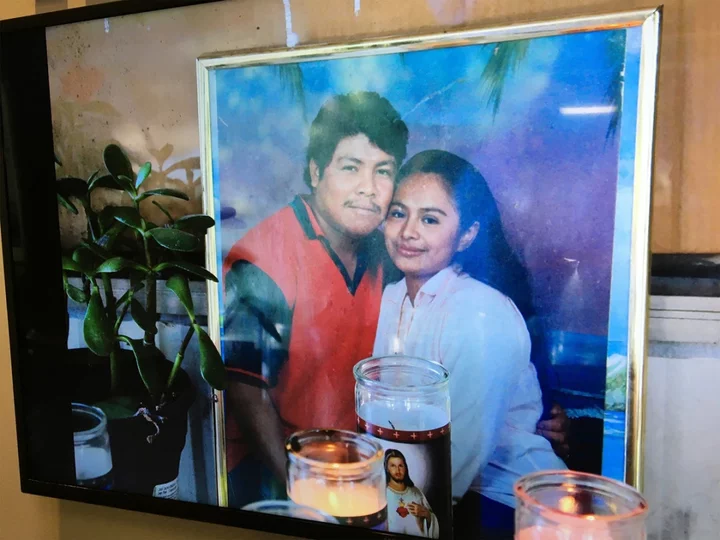
Jury rejects lawsuit after police fatally shoot man when going to wrong house
A federal court jury in Oxford, Mississippi, has ruled against a civil lawsuit filed by the widow of a man who was shot dead in 2017 by two police officers, while serving a warrant at the wrong address. Claudia Linares was seeking $20m in compensation for the death of her husband Ismael Lopez, 41. During the four-day trial that concluded on Thursday 15 September, the jury ruled that Southaven officers, Zachary Durden and Samuel Maze, did not violate Lopez’s civil rights. “The verdict was that the jurors did not believe that the use of force used by Officers Durden and Maze was excessive in light of all the facts that they considered,” Murray Wells, the attorney for Lopez’s family, said in a statement to WREG-TV. The case had previously attracted attention because the city tried to argue that Lopez did not have any civil rights as he was living illegally in the US and was facing deportation and criminal charges for the illegal possession of firearms. However, in 2020, a judge rejected the city’s claim, and ruled that constitutional rights apply to “all persons.” The Mississippi Bureau of Investigation reported that on 14 July 2017, Lopez and his wife were in bed when officers knocked on their door with the intention of serving a domestic violence warrant to a person who actually lived across the street. According to Mr Durden and Mr Maze, the pair did not identify themselves, and when the door opened, Lopez’s dog ran out and he pointed a rifle through the door. Officer Maze then shot the dog and Mr Durden fired multiple bullets at Lopez. He died after a bullet hit the back of his skull when he was six feet from his front door. Police have claimed he was running away from law enforcement, and a third office later told investigators that Mr Durden had ordered Lopez to drop his rifle several times before shooting him. Lopez’s lawyers stated in their argument that his fingerprints and DNA were not found on the rifle supposedly used to fire at Mr Durden, but believe the officer shot him in reaction to his colleague shooting the dog. They also called upon evidence that state investigators found his body lying in a prone position with his hands cuffed behind his back. There is no video footage to corroborate either claim. “Those officers used tactical maneuvers to hide themselves as police officers,” Mr Wells told WREG. “There are a couple of huge factors at play. One was this unbelievable mistake of going to the wrong address and we felt it was just incompetent because they didn’t even take the time to look at the boxes. They went to the wrong side of the road, so that started this. They never announced that they were police and at the end of the day Ismael Lopez was shot through a door, in the back of the head,” he said. Darren Musselwhite, mayor of Southhaven, praised the jury’s decision: “This verdict proves what we’ve believed to be correct since day one as our officers responded appropriately considering the circumstance of being threatened with deadly force,” he said. “We’ve stood behind them during the last six years for this very reason and, for their sake, are glad this trial is over.” Read More Police officer who fatally shot motorist charged with murder Philadelphia officer to be fired over shooting death of Black man as new video contradicts police account A Utah man was killed during a police traffic stop. His family say they’ve been ‘stonewalled’ by authorities
2023-09-19 02:47

Person detained in ‘ambush’ killing of LA sheriff’s deputy
A person has been detained in connection with the fatal shooting of a Los Angeles County sheriff’s deputy who was shot over the weekend in what authorities say was a targeted killing. Deputy Ryan Clinkunbroomer, 30, was on duty Saturday night and sitting in his patrol car at an intersection in Palmdale, California, when he was ambushed, Sheriff Robert Luna said in an earlier press conference. “He ambushed and killed — murdered — one of our deputies,” Mr Luna said, describing the suspect as a “public safety threat.” The sheriff announced on Twitter Monday morning that a person has been detained, but further details were not immediately available. A press conference is set for later today. Police said there was video that captured a vehicle described by Mr Luna as a 2006 to 2012 dark grey Toyota Corolla driving next to Clinkunbroomer’s patrol vehicle at the time of the 6pm shooting. The sheriff released photos, calling it a “vehicle of interest.” Mr Luna added that Clinkunbroomer had gotten engaged just four days before the incident. “He was just starting his life,” the sheriff said. The sheriff also released a statement on Facebook, writing that the “eight-year veteran of the LASD” was “senselessly murdered tonight.” “From everything I know about Ryan, people absolutely loved and adored him. He wasn’t just one of our Deputy Sheriffs. He was a third generation deputy. His father and grandfather served with us,” the statement read. “Service was running through his veins. He embodied the values of bravery, selflessness and was committed to justice. Our deputy was a devoted family member and a cherished community member. He was cowardly shot while working tirelessly to serve our community this evening,” the sheriff added. Read More LA sheriff’s deputy shot dead inside patrol car in targeted ‘ambush’ days after marriage proposal A Mississippi jury rules officers justified in fatal 2017 shooting after police went to wrong house Minnesota man acquitted of killing 3 people, wounding 2 others in case that turned alibi defense
2023-09-18 22:45
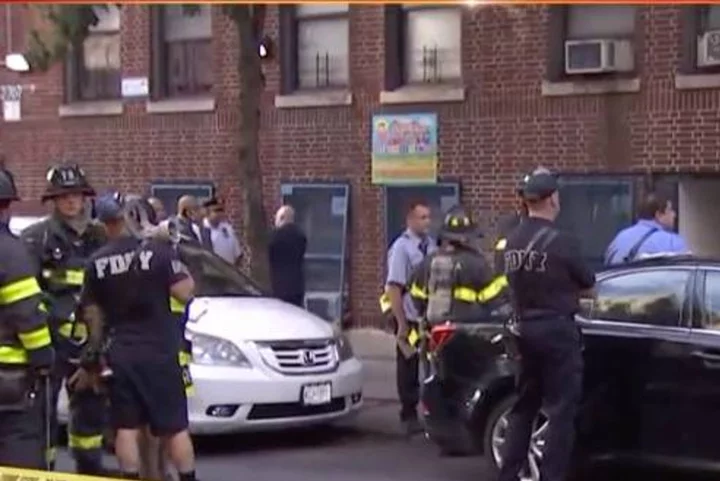
Daycare owner and neighbour charged after one-year-old child died from suspected fentanyl exposure
The owner of the daycare centre in the Bronx where a one-year-old boy died and other children fell ill from suspected fentanyl exposure have been charged with murder. Divino Nino owner Grei Mendez De Ventura, 36, and his neighbour Carlisto Acevedo Brito, 41, were arrested on Saturday night. They are each facing 11 charges, including child endangerment and criminal possession of a controlled substance, according to The New York Post. Daycare staff called 911 after finding children unresponsive after their nap on Friday. A two-year-old boy is in critical condition, while another two-year-old boy and an eight-month-old girl are both in stable condition. The one-year-old boy was pronounced dead at the scene. A fourth child, another two-year-old boy, who was picked up from the daycare earlier in the day on Friday also appeared to have been exposed to drugs. He was taken to a hospital and is in stable condition, police said. All four children seemed to have been exposed to an opioid, officials said, according to the New York Times. These suspicions, police said, arose after assessing the hospitalised children’s symptoms in combination with the discovery of a “kilo press” found at the daycare centre. “This is an item that is commonly used by drug dealers when packaging large quantities of drugs,” police explained. Last Friday concluded the one-year-old’s first week at the daycare, according to the child’s father Otoniel Feliz. Mr Feliz told the Post that he initially thought his son was sick from carbon monoxide poisoning. “It was a peaceful place, it seemed like they would take good care [of the kids]. They always keep in contact with us. Everything seemed fine,” he said. “We expected that we were taking our son to a place where he would be taken care of, not to the funeral home,” Mr Feliz said. Read More Prescription opioid shipments declined sharply even as fatal overdoses increased, new data shows One-year-old child dead and three others hospitalised after daycare incident No charges against Maine authorities for death of handcuffed man who was hit in head with flashlight
2023-09-18 01:15
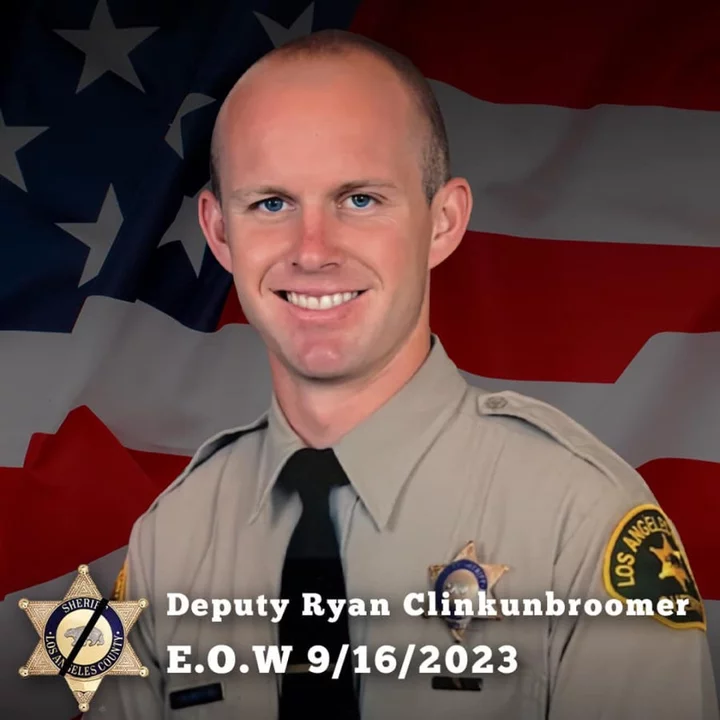
LA sheriff’s deputy shot dead inside patrol car in targeted ‘ambush’ days after marriage proposal
A Los Angeles County Sheriff’s Department deputy was shot and killed in his patrol while on duty in what officials described as a “targeted” attack. Ryan Clinkunbroomer, 30, was found shot on Saturday evening after a “good samaritan” reported an officer “unconscious” inside his vehicle outside the Palmdale sheriff’s station, Sheriff Robert Luna said during a news conference. The deputy was then transported to a local hospital and was treated for a gunshot wound but did not survive. The suspect has not been caught, the sheriff said. “He ambushed and killed — murdered — one of our deputies,” Mr Luna said, describing the suspect as a “public safety threat.” Sheriff Luna said although the investigation is in the early stages, the shooting is believed to be a “targeted act.” He speculated, “It could have been just the fact that he was representing the Los Angeles County Sheriff’s Department as one of our employees. We don’t know.” “He was just driving down the street and for no apparent reason — and we’re still looking into the specific reasons – somebody decided to shoot and murder him. I’m assuming at this point, because he was in uniform. “Our deputy was a devoted family member and a cherished community member. He was cowardly shot while working tirelessly to serve our community this evening.” Mr Luna added that Clinkunbroomer had gotten engaged just four days before the incident. “He was just starting his life,” the sheriff said. The sheriff also released a statement on Facebook, writing that the “eight-year veteran of the LASD” was “senselessly murdered tonight.” “From everything I know about Ryan, people absolutely loved and adored him. He wasn’t just one of our Deputy Sheriffs. He was a third generation deputy. His father and grandfather served with us,” the statement read. “Service was running through his veins. He embodied the values of bravery, selflessness and was committed to justice. Our deputy was a devoted family member and a cherished community member. He was cowardly shot while working tirelessly to serve our community this evening,” the sheriff added. Read More Man charged with attempted murder after boy, 14, stabbed in chest Mother who killed three young children before attempting to end her life is indicted on murder charges Alex Murdaugh trial latest: Prosecution finds ‘significant disputes’ in convicted murderer’s jury tampering claims
2023-09-17 22:23

Wrongly arrested because of facial recognition: Why new police tech risks serious miscarriages of justice
On 16 February, Porcha Woodruff was helping her children get ready for school when six Detroit police officers arrived at her door. They told her she was under arrest for a January carjacking and robbery. She was so shocked she wondered for a moment if she was being pranked. She was eight months into a difficult pregnancy and partway through a nursing school programme. She did little else besides study and take care of her kids. She certainly wasn’t out stealing cars at gunpoint, she said. “I’m like, ‘What,?’ I opened my door so he could see my stomach. ‘I’m eight months pregnant. You can see two vehicles in the driveway. Why would I carjack?’” she told The Independent. “‘You’ve gotta be wrong. You can’t have the right person.’” Her children cried as she asked officers if the suspect was pregnant and insisted they had mistakenly arrested her. She was put in handcuffs and taken to jail, where she had panic attacks and early contractions. She later learned police identified her as a suspect after running security footage through the department’s facial recognition software, relying on a 2015 mugshot from a past traffic arrest into a photo lineup where the carjacking victim singled out Ms Woodruff as her assailant. The Detroit Police Department eventually dropped the case, but the arrest has deeply shaken Ms Woodruff. “What happened to the questioning? What happened to me speaking to someone?” she said. “What happened to any of the initial steps that I thought were available to a person who was accused of doing something?” The case underscores the growing risks of civil rights violations as police departments and law enforcement agencies across the country increasingly adopt facial-recognition and other mass surveillance technologies, often used as an unreliable shortcut around methodical human police work. Criminal justice advocates and the people targeted by this burgeoning police tech argue these programmes are riddled with the same biases and opaque or nonexistent oversight measures plaguing policing at large. The early results, at least, haven’t been encouraging. At least six people around the US have been falsely arrested using facial ID technology. All of them are Black. These misfires haven’t stopped the technology from proliferating across the country. At least half of federal law enforcement agencies with officers and a quarter of state and local agencies are using it. “We have no idea how often facial recognition is getting it wrong,” Albert Fox Cahn, executive director of the Surveillance Technology Oversight Project (STOP), told The Independent. “When you have facial recognition being used thousands of times, without any accountability for mistakes, it’s inviting injustice,” he added. Nowhere has that injustice been more pronounced than Detroit, a city where Black people have long experienced documented over-policing from law enforcement. Three of the six people mistakenly arrested by facial recognition technology have been in the Motor City, according to the ACLU. This status quo is why Ms Woodruff is suing DPD, claiming among other things that the agency has engaged in “a pattern of racial discrimination” against her and other Black residents “by using facial recognition technology practices proven to misidentify Black citizens at a higher rate than others in violation of the equal protection guaranteed by” the Michigan civil rights statutes. “I definitely believe that situation would’ve gone differently had it been another race, honestly, just my opinion. There was no remorse shown to me and I was pregnant. I pleaded,” she told The Independent. “Being mistaken for something as serious as that crime – carjacking and armed robbery – that could’ve put me in a whole different type of lifestyle,” she added. “I was in school for nursing. Felons cannot become nurses. I could’ve ended up in jail. That could have altered my life tremendously.” The Independent has requested comment from DPD. After Ms Woodruff filed her suit, Detroit police chief James White said in a press conference in August “poor investigative work” led to the false arrest, not facial recognition technology. He claimed that department software gave detectives numerous possible suspects and was only meant to be a “launch” point for further investigation. “What this is, is very, very poor investigative work that led to a number of inappropriate decisions being made along the lines of the investigation, and that’s something this team is committed to not only correcting, having accountability, having transparency with this community, and in building policy immediately to ensure regardless of the tool being used, this never happens,” Mr White said. He added that officers won’t be allowed to use images sourced by facial recognition in lineups, and warrants based on facial ID matches must be reviewed by two captains before being carried out. ‘The lead and the conclusion’ Some aren’t convinced these changes will prevent the excesses of what they see as a fundamentally flawed technology. “The technology is flawed. It’s inaccurate,” Philip Mayor, senior staff attorney at the ACLU of Michigan, told The Independent. “Police repeatedly assured us that it’s being used only as an investigative lead, but what we see here in Detroit time and time again is it is both being used as the lead and the conclusion.” Studies suggest that facial-recognition algorithms, which have been used to capture suspects in high-profile cases like those connected to January 6, also fail to accurately identify Black people and women, driving up inequalities in arrests, because image-training datasets often lack full diversity. However, according to Mr Mayor, police departments make things even worse by failing to do basic training and common-sense investigative work on top of facial recognition tools. He represents Robert Williams, a Detroit man who was mistakenly arrested for a 2020 theft from a high-end Detroit boutique. A security contractor employed by the store worked with the city and state police and flagged Mr Williams’ name using facial recognition tools. How police came to trust that Williams was the right man reveals the sloppiness of how facial ID tech is used in practice, according to the ACLU attorney. After the theft, police searched a database containing both past photos of Mr Williams and his present-day driver’s license. ‘It picks out 486 people who are the most likely perpetrators; not a single one of them is his current driver’s license, even though his current driver’s license is in the database that was searched,’’ Mr Mayor said. “That seems like an obvious exculpatory fact, the kind of thing that would lead you to say if you were actually thinking, this isn’t the right guy.” When these dubious matches are then used to build a line-up, questionable police work attains the gloss of near-fact, and witnesses choose from a group of people who may have no credible tie to a crime that took place but still look something like the person who did. “This is not me,” Mr Williams told police during his investigation, according to The New York Times. “You think all Black men look alike?” The father of two, after asking a local police voluntarily stop using facial recognition technology, sued the DPD in 2021. “This technology is dangerous when it doesn’t work, which is what the cases in Detroit are about. It’s even more dangerous when it does work. It can be used to systematically surveillance when we come and go from every one of the places that are important in our private lives,” the ACLU attorney said. “I don’t think there’s any reason to believe that departments elsewhere right now are not making the same mistakes.” ‘A force multiplier for police racism’ Detroit isn’t the only place grappling with the impacts – and errors – of this technology. In Louisiana, the use of facial recognition technology led to a wrongful arrest of a Georgia man for a string of purse thefts. A man in Baltimore spent nine days in jail after police incorrectly identified him as a match to a suspect who assaulted a bus driver. The Baltimore Police Department ran nearly 800 facial recognition searches last year. Those cases and others have added to a growing list of misidentified suspects in a new era of racial profiling dragnets fuelled by tech that is rapidly outpacing police and lawmakers’ ability to fix it. Facial recognition software often is “a force multiplier for police racism,” worsening racial disparities and amplifying existing biases, according to Mr Cahn. It can spur a vicious cycle. Black and brown people are already arrested at disproportionate rates. These arrests mean they are more likely to enter a database of faces being analyzed and used for police investigations. Then, error-prone facial recognition technology is used to comb these databases, often failing to identify or distinguish between Black and brown people, particularly Black women. “So the algorithms are biased, but that’s just the start, not the end of the injustice,” Mr Cahn says. Such technologies, advocates warn, are embedded in wider mass surveillance programmes that often lack robust public oversight. In New York City, law enforcement agencies relied on facial recognition technology in at least 22,000 cases between 2016 and 2019, according to Amnesty International. New York City’s Police Department spent nearly $3bn growing its surveillance operations and adding new technology between 2007 and 2019, including roughly $400m for the Domain Awareness System, built in partnership with Microsoft to collect footage from tens of thousands of cameras throughout the city, according to an analysis from STOP and the Legal Aid Society. The NYPD has failed to comply with public disclosure requirements about what those contracts – from facial recognition software to drones and license plate readers – actually include, according to the report. Until 2020, that money was listed under “special expenses” in the police budget until passage of the Public Oversight of Surveillance Technology Act. The following year, more than $277m in budget items were listed under that special expenses programme, the report found. “We’ve seen just concerted pushback from police departments against the sort of oversight that every other type of government agency has because they don’t want to be held accountable,” according to Mr Cahn. “If we treated surveillance technology vendors the way we treated other technology vendors, it would be like Theranos – police would be arresting some of these vendors for fraud rather than giving them government contracts,” he added. “But there is no accountability.” On 7 August, 2020, New York City Police Department officers in riot gear launched a six-hour siege outside Derrick Ingram’s Hell’s Kitchen apartment. Mr Ingram – a racial justice organiser who is embroiled in a federal lawsuit against the NYPD – was surrounded by more than 50 officers after he allegedly shouted into an officer’s ear at a protest earlier that summer. Police insisted they had a warrant on assault charges, but couldn’t produce one when Mr Ingram asked them to, according to his suit. The whole encounter, in which the NYPD deployed snipers, drones, helicopters, and police dogs, began with facial recognition technology. “To say that I was terrified is an understatement – I was traumatized, I still am,” Mr Ingram later testified. “I fear deep down in my core that if I opened my door to those officers, my life would be swiftly taken.” To identify Mr Ingram as a potential suspect, NYPD relied on facial recognition software “as a limited investigative tool, comparing a still image from a surveillance video to a pool of lawfully possessed arrest photos,” according to a police statement, adding that “no one has ever been arrested solely on the basis of a computer match.” The software pulls from a massive internal database of mugshots to generate possible matches, according to the department. Civil rights groups and lawmakers criticized the department’s use of facial recognition – initially hailed as a tool to crack down on violence offenders – for being deployed to suppress dissent, and triggering a potentially lethal police encounter at Mr Ingram’s home. As for Ms Woodruff in Detroit, she hopes her experience can show the dangers of relying too heavily on facial recognition technology. “It may be a good tool to use, but you have to do the investigative part of using that, too,” she said. “It’s just like everything else. You have your pieces that you put together to complete a puzzle.” Her life would’ve been a whole lot different, she said, if “someone would’ve just taken the time to say, ‘OK, stop, we’re going to check this out, let me make a phone call.’” Read More Detroit police changing facial-recognition policy after pregnant woman says she was wrongly charged White House science adviser calls for more safeguards against artificial intelligence risks How a Drake concert put NYPD’s ‘arsenal’ of surveillance technologies under the spotlight
2023-09-17 22:16
